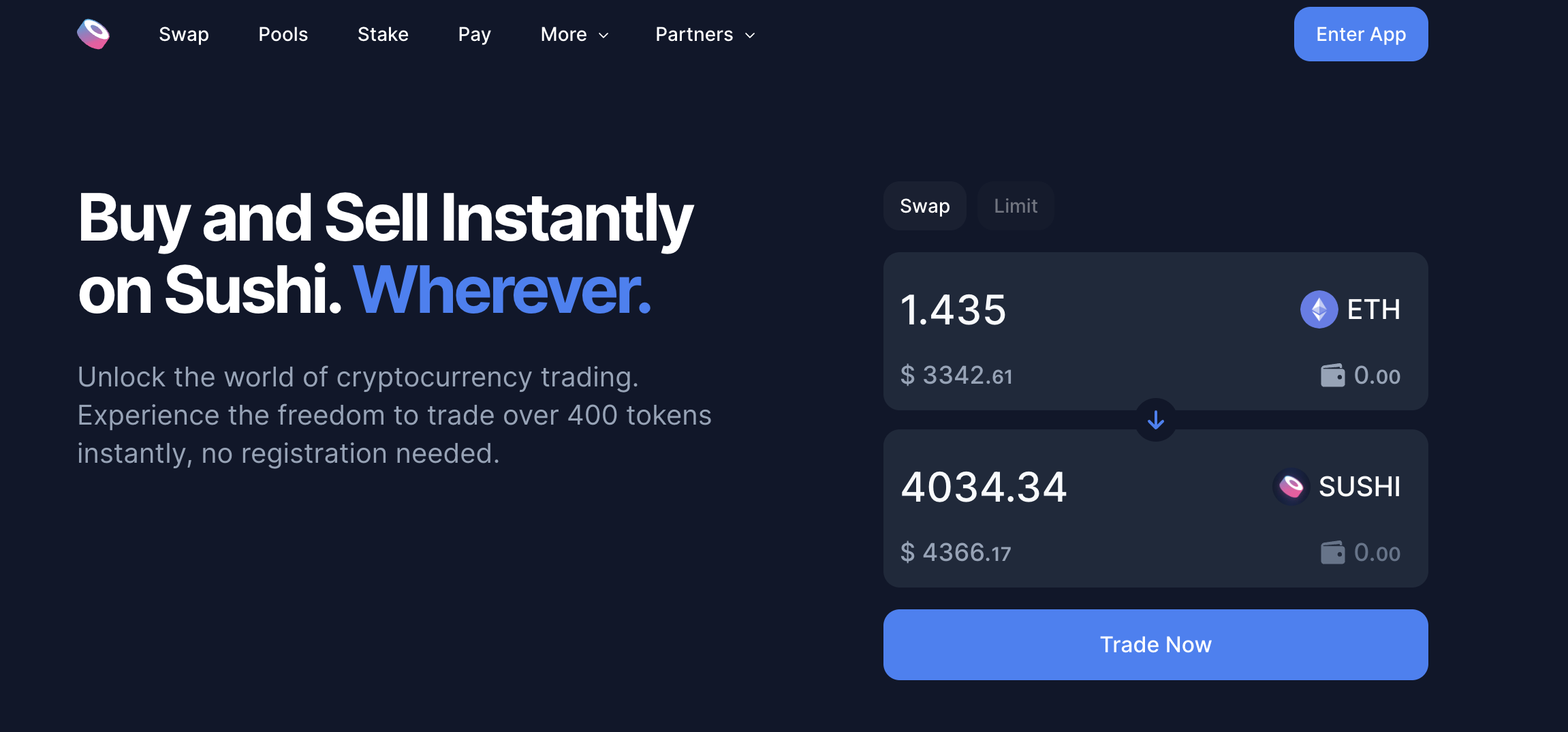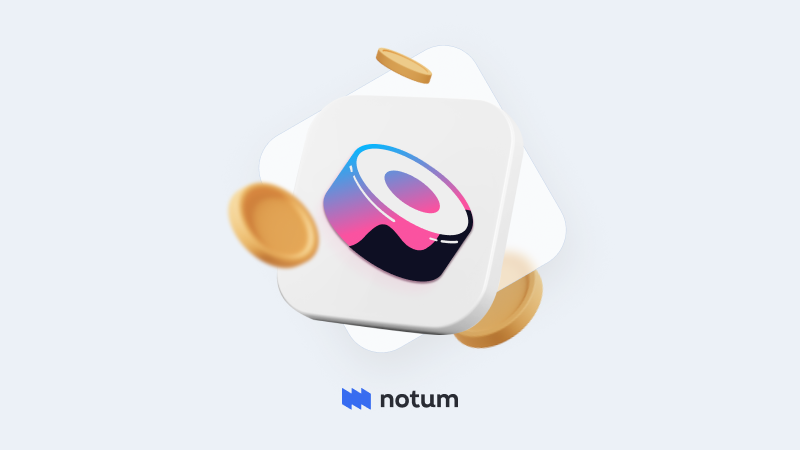Intro
In 2024, the cryptocurrency market offers users a huge number of investment strategies to generate passive income. Liquidity pool provision is one of the options that has literally brought trading and borrowing in the DeFi space to a new level.
A liquidity pool is a collection of crypto assets invested in smart contracts. They are available for various purposes in the DeFi field, such as lending, trading, financing and others.
Thus, pools combine user deposits and provide liquidity to various DEXs. Instead of actual market makers, DeFi platforms use automated market makers (AMMs), which operate on liquidity pools, allowing users to safely and freely trade crypto assets.
The advantage of liquidity pools is that they allow users to make swaps without trading partners.
Now users do not need to buy tokens from investors at fairly high prices. Instead, cryptocurrency can be purchased on DeFi platforms with an automatically set price equivalent to the market rate.
Today's article from Notum will tell you about the popular platform for liquidity pool provision - SushiSwap. We will pay attention to its main characteristics, advantages, risks, and also consider profitable liquidity pools for investment in 2024.
SushiSwap Platform: The Essentials
- TVL: $381,140,000
- Risk Level: Medium
- Average APY: 9.06%
- Blockchains: Ethereum, Arbitrum One, Base, Polygon, Polygon zkEVM, Scroll, Optimism, Linea, Core Blockchain, Filecoin, BNB Smart Chain, ThunderCore, Gnosis, Avalanche, Fantom, Arbitrum Nova, Harmony, BitTorrent Chain, Kava, Metis Andromeda, Boba Eth, Boba BNB, Celo, Fuse, Huobi ECO Chain, Moonbeam, Moonriver, OKXChain, Palm, Telos EVM, Haqq Network
- Foundation Date: Aug, 2020
Initially, Sushi.Swap was based on Uniswap - a decentralized exchange that was aimed at providing users with access to cryptocurrency without intermediaries. Uniswap is not controlled by a singular entity and uses AMMs to facilitate trading and purchasing.
The key point of Uniswap is that it is open source, which means anyone can use it to create their own decentralized exchange. This is exactly how SushiSwap came into being.
SushiSwap is a platform based on Uniswap, which was originally created to contribute to the development of decentralization. The platform offered fairly large rewards to liquidity providers and began to gain popularity.
Subsequently, SushiSwap turned into a full-fledged DEX AMM with numerous use cases, including cross-chain swaps, liquidity pool provision, staking, SushiPay, Onsen Farms, BentoBox and other functions.

Source: Technopedia
SushiSwap app now provides users with the ability to seamlessly sell and buy cryptocurrencies. The platform supports trading of more than 400 tokens without going through the registration process. However, to use SushiSwap, the user needs to connect one of the following wallets - MetaMask, WalletConnect, Coinbase Wallet or Gnosis Safe.
The advantage of SushiSwap is that it has a huge number of supported blockchains, which expands the user experience. The platform also has its own Sushi Academy with educational materials, tutorials, documentation and more to facilitate the user experience.
SushiSwap also has its own currency - SUSHI crypto, which is used for protocol’s governance. Also, SUSHI tokens can be utilized for staking, yield farming and liquidity pool provision. As of January 2024, Sushiswap’s coin price is $1.08
Speaking of liquidity pool provision, SushiSwap offers users fairly high rewards and a convenient intuitive interface. Currently the platform has 4177 pools with various fees and APRs. In addition, SushiSwap recently presented users with the option of smart pools.
«Smart pools optimize liquidity allocation within custom price ranges, enhancing trading efficiency by providing deeper liquidity around the current price, increasing Liquidity Providers (LP) fee earnings» - SushiSwap.

Source: SushiSwap
Why Invest in SushiSwap?
Liquidity pools that allow users to make swaps are undoubtedly an important part of the DeFi sector. However, in addition to this, liquidity pool provision is a strategy that allows users to earn pretty high rewards.
By providing liquidity to platforms like SushiSwap and earning percentage, users also receive LP tokens that can be used to generate additional income.
Thus, many users choose to invest in liquidity pools as it gives them double rewards and the ability to use their tokens. This strategy is good for both experienced users and beginners, as it has a fairly large number of advantages:
- Fairly high rewards. Liquidity pool participants who contribute their crypto assets to pools on SushiSwap earn a portion of the trading commissions that occur in the pool. Thus, providing liquidity on the platform generates passive rewards for them. Moreover, APRs on the platform can be quite high. For example, when investing in smart pools on SushiSwap, APRs can reach 509.19%.
- Additional income. As already mentioned, by depositing assets into the pool, users receive additional LP tokens representing their share in the pool. Thus, while the main asset brings passive income for the investor, LP tokens can be used for exchange between users, as well as additional income, for example from staking or yield farming.
- Variety of investment opportunities. As you know, SushiSwap not only supports a huge number of blockchains but also offers users more than 4,000 pools to provide liquidity. Thus, each user can choose the most suitable one based on interest rates, assets provided and the desired level of risk.
- Smart pools. Recently the platform released a new feature called smart pools, which is designed to optimize liquidity allocation, which is a big advantage for beginners struggling with understanding pool mechanisms.
In addition, by providing liquidity to the pools on SushiSwap, users contribute to the strengthening of the decentralized finance system and its development.
SushiSwap V1 | V2 | V3
During its existence, the platform underwent several updates - SushiSwap V1 in August 2020, SushiSwap V2 in September 2020 and SushiSwap V3 in 2022.
- SushiSwap V1. The very first version of SushiSwap was built on the Ethereum blockchain and implemented Automated Market Making (AMM), which allowed users to trade ERC-20 tokens without order books. The main functions of SushiSwap V1 were yield farming and liquidity provision, encouraging investors to stake assets and earn SUSHI tokens.
- SushiSwap V2. The updated version of the platform offered increased security, scalability and overall functionality. In addition, SushiSwap V2 introduced a more modular code architecture and included new features to attract liquidity providers. V2 also features BentoBox, offering users innovative income management strategies, and Kashi, a lending and borrowing platform.
- SushiSwap V3. The latest SushiSwap update launched new concentrated liquidity pools, providing investors with larger trading volumes and liquidity, while at the same time reducing financial risks. The developers have also implemented Tines in version V3, which offers users the cheapest swaps with maximum capital inefficiency. To improve the user experience, Sushi's v3 introduced step-by-step UX guidance, light and dark themes, and routing for cost-effective swaps.

Source: SushiSwap Twitter
Investment Strategies on SushiSwap
As said, Sushi exchange offers a huge number of investment opportunities, which allows almost every investor to choose a suitable investment strategy for themselves. However, among the variety of options, it can be quite difficult to find a suitable pool to provide liquidity. Today we will look at two popular investment strategies on SushiSwap that allow users to receive rewards.
MATIC / WETH on Polygon (V2)
Total APY – 5.16%, TVL – $3,53m
This liquidity pool on the Polygon network invites users to deposit MATIC and WETH assets on SushiSwap V2 to receive rewards. By investing in this liquidity pool, users earn between 5.00% and 5.50% APY. MATIC / WETH has a fee of 0.3% and has a fairly large total value locked of more than $3.5 million, which indicates good performance and a high level of pool’s security.

Source: SushiSwap
WBTC/ ETH on Ethereum (V2)
Total APY – 1.14%, TVL – $25,35m
WBTC/ETH is a popular liquidity pool on Ethereum that has a huge TVL compared to other pools on the platform. The total value locked of WBTC/ETH exceeds $25 million, which shows the excellent performance and security of this investment strategy. Rewards for providing assets to this highly liquid pool can vary and often range from 1% to 1.50% APY, while the SushiSwap pool’s fee is 0.3%.

Source: SushiSwap
If you need to make swaps to deposit assets into SushiSwap pools, you can use the Notum App with its handy and intuitive interface. This platform allows users to make swaps in one click.

Source: Notum
SushiSwap: Risks and Disadvantages
Despite the many advantages of SushiSwap, the platform also has a number of risks that should be considered before providing liquidity. Below you can see the main ones:
- Smart Contract Risks. Since SushiSwap operates on smart contracts, any errors or vulnerabilities in the code can lead to hacking and potential loss of funds.
- Impermanent Loss. If the value of the assets in the liquidity pool differs significantly from the initial deposit, liquidity providers may face an impermanent loss. As a result, this may result in the investor receiving a lower return than if he simply owned the crypto asset.
- Market volatility. As known, the crypto market is quite unstable, which means the value of assets on SushiSwap can also be subject to price fluctuations and lead to potential losses.
- Platform’s complexity. Despite the fact that SushiSwap itself has a fairly simple and intuitive interface, the variety of financial opportunities may be incomprehensible to inexperienced users. By choosing the wrong investment strategy, users may also face potential financial losses.
It is important to note that to ensure the proper level of security, SushiSwap exchange has passed several audits. The main ones include Trail of Bits, PeckShield and Quantstamp. However, although audits indicate security, they do not provide an absolute guarantee, which is why it is important to conduct your own research before using the platform.
Notum’s Verdict
SushiSwap is a popular DEX and AMM that allows users to perform a large number of crypto operations, from swaps and trading to liquidity pool provision. The platform supports multiple blockchains and has a huge number of investment strategies, allowing investors to choose an option that suits their desired rewards and risk level. With an average APY of 9.06%, SushiSwap offers fairly high rewards and low fees, making it an excellent choice for both beginners and experienced investors.
Despite the fact that the platform has undergone several serious audits, its use still includes some risks associated with smart contracts, market volatility and impermanent loss. However, high TVL, good profits and a user-friendly interface make SushiSwap an excellent platform for liquidity pool provision in 2024.
Follow Us on Socials
Website | DApp | Twitter | Discord | Telegram | Mirror | DeBank
Disclaimer: Notum does not provide any investment, tax, legal, or accounting advice. This article is written for informational purposes only. Cryptocurrency is subject to market risk. Please do your own research and trade with caution.
